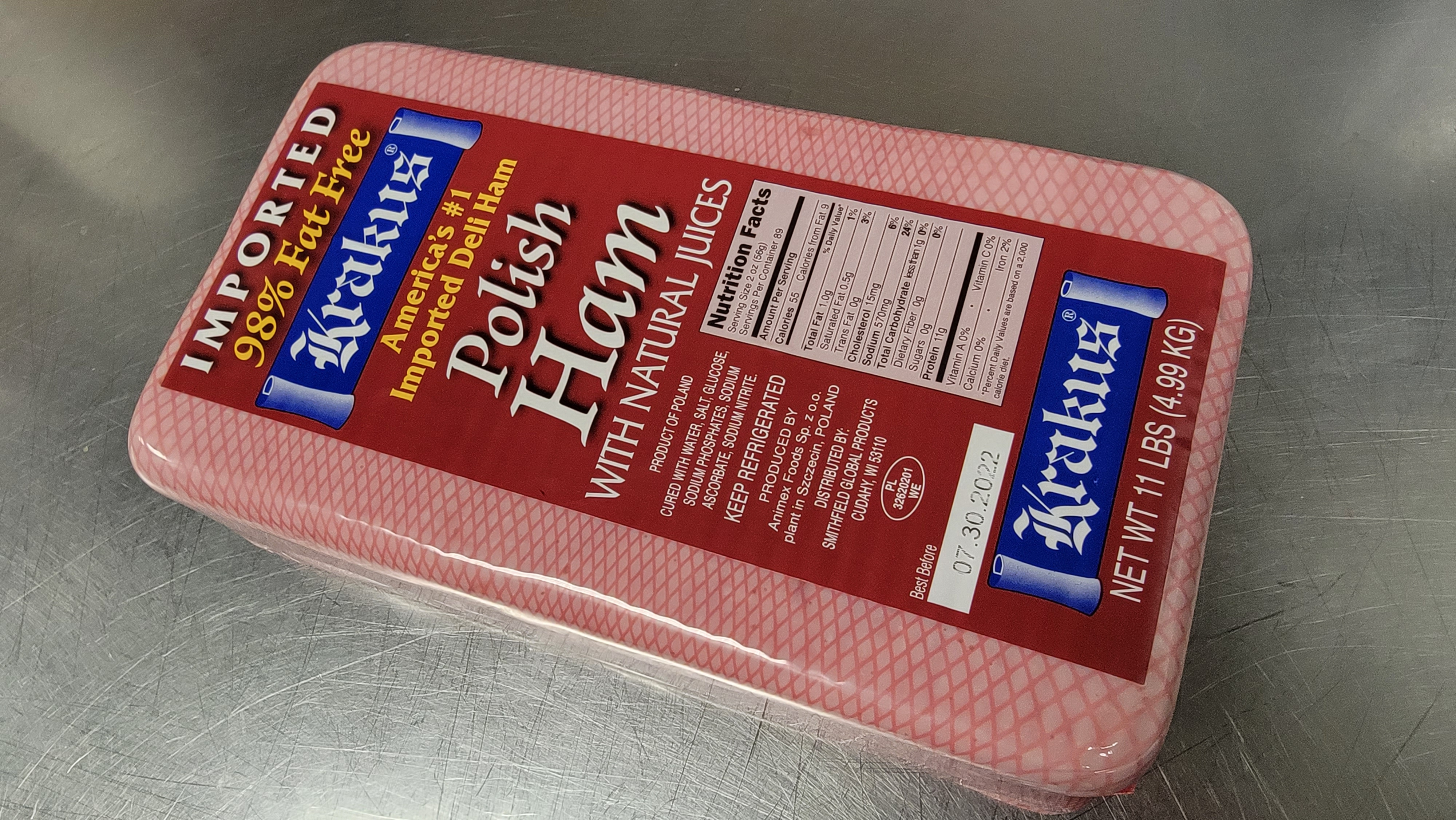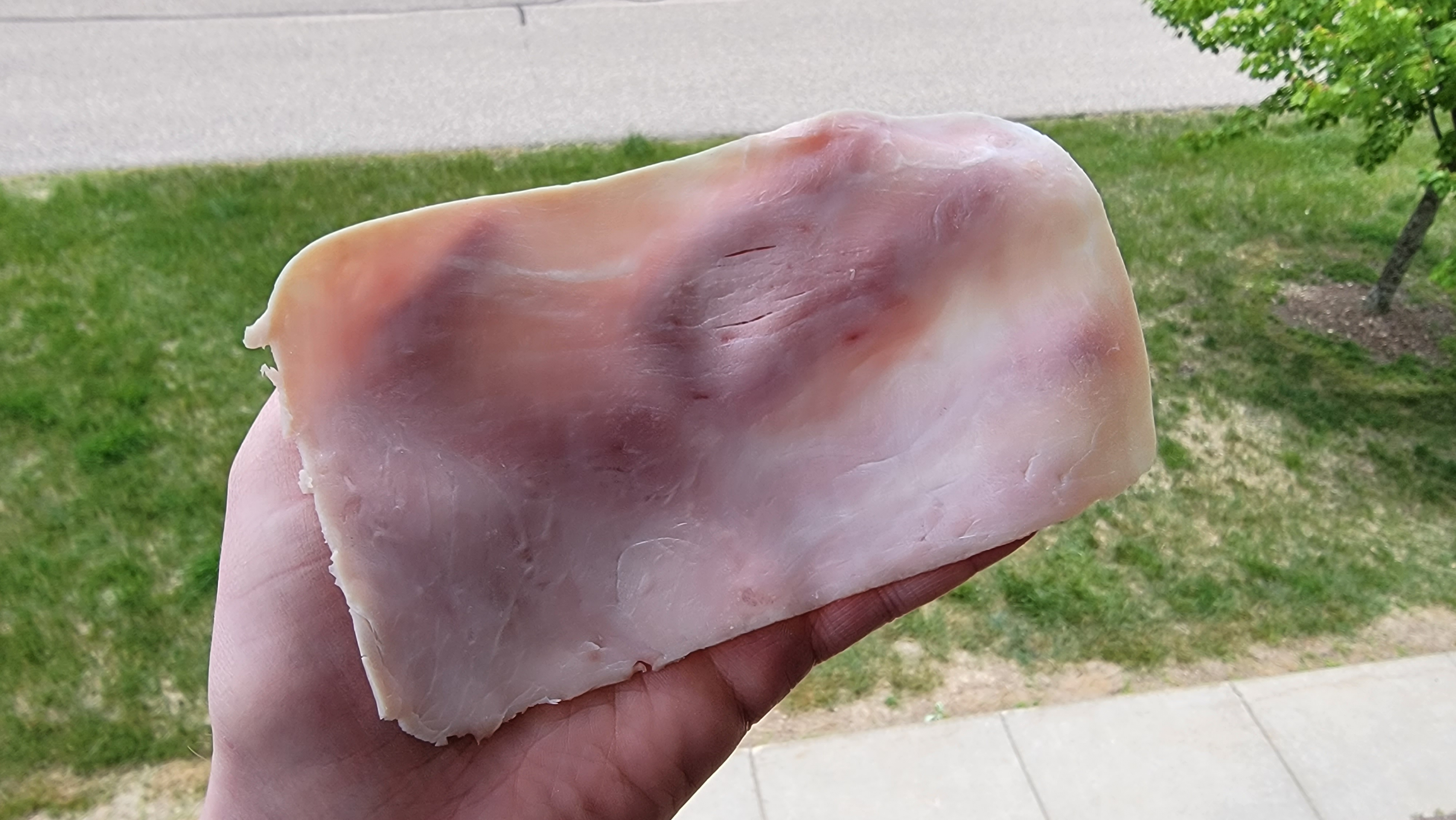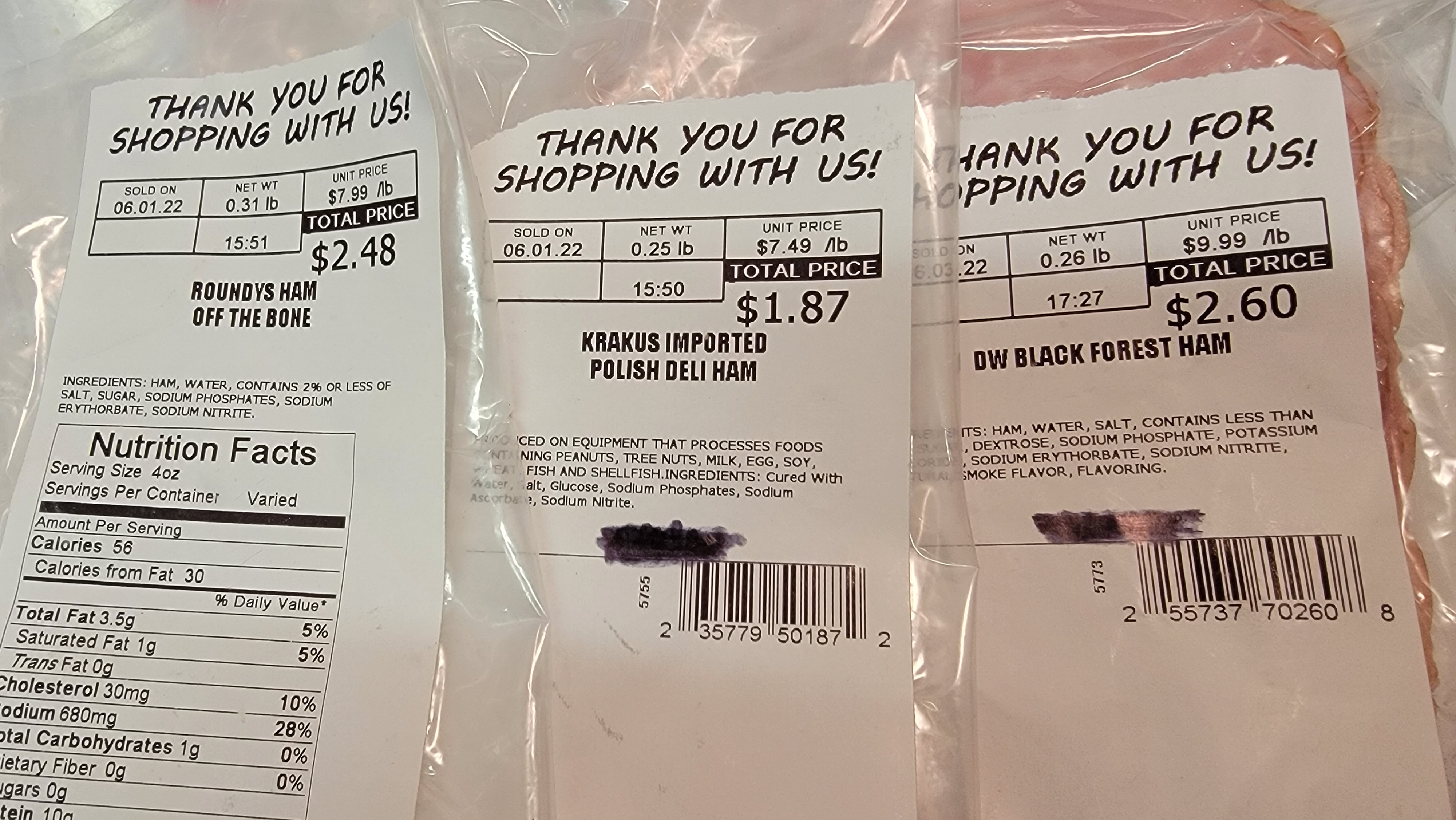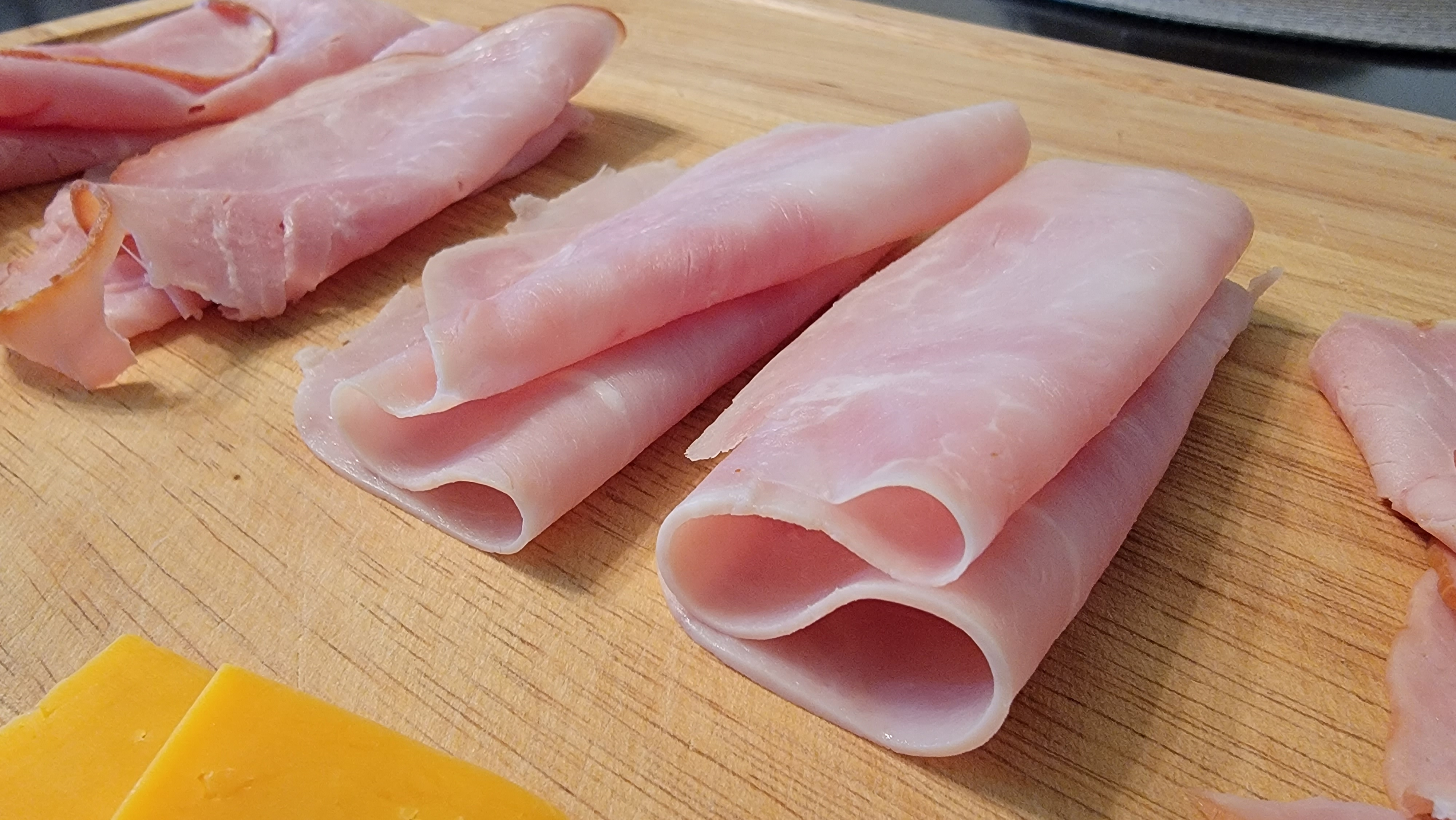Release The Krakus: A Square Ham With A Cult Following
Examining the virtues of "America's #1 Imported Deli Ham."
I'll never forget the first time I heard its name. It was my second night working at the grocery store deli, when an elderly man leaned against the counter and grumbled, "Give me a pound of the Krakus." I thought I'd misheard. I asked the gentleman to repeat himself, and my brain went immediately to Clash of the Titans. I pointed at the fish counter, twenty yards to the left.
"Nah," said the man. "The Krakus. Gimme the square ham."
I flagged down one of my coworkers, and repeated the gentleman's request. Was this a product we carried? Why yes, they said, of course.
I was led to a far corner of the cooler, where a stack of meat waited in the dark. Surely my eyes were deceiving me – Hams come in half-ovals, not rectangles. But these weren't just any hams. There, resting atop one another like the bricks in the house of the three little pigs, was a veritable wall of Krakus.
What (and why) is Krakus ham?
Okay, so I've embellished just the tiniest bit. But that's the TV-biopic version of how I first encountered Krakus. At the time of the incident, I lived in an area with a large Polish community. The last names of my girlfriend and several acquaintances ended in a charming "-ski."
As such, this was a market stronghold for Krakus, one of the world's iconic hams. According to the company's website, this log of pink protein is "cured with only the finest hand-selected ingredients and recipes passed down through centuries... ideal for sandwiches, salads and other recipes. Accept no imitations. For unrivaled quality and unsurpassed flavor, there is only Krakus."
Plus, it turns out I'd been eating this particular ham for my whole life. Growing up in the Midwest, one of the main appetizers at family gatherings was "Wisconsin Sushi," a dill pickle spear coated with a layer of cream cheese and wrapped in length of ham before being chopped neatly into rolls. And, more often than not, it turns out that my German grandparents were buying the Polish ham.
So, when I encountered this familiar beast on a recent trip to the deli, I decided to compare it with two supposedly better offerings: Roundy's Ham off the Bone and Dietz & Watson's Black Forest Ham.

Don't you judge my charcuterie skills. I'd been working all morning with only a few mouthfuls of granola. I'd sampled each of the three hams before, but decided to get scientific, folding them in a fancy pattern and adding in a couple nubs of cheddar cheese.
Krakus ham: A taste test
I mean, come on, it's fresh-sliced deli ham. It tasted (And I mean this in the most positive way possible) like chewing through a piece of wet, salty paper. Krakus would be completely serviceable in a ham sandwich, or as the cladding for the appetizer described above. The texture was springier than expected, kind of like those ham cubes folks pile on their salads at the local buffet. In short, it was a perfectly acceptable treat.
What I didn't expect was the massive step up in flavor I'd get from the store-brand Ham off the Bone. I don't know where Kroger/Roundy's gets this stuff, but it was legitimately delicious. The salt content was a bit more forward, bolstered by a sweet extra porkiness that left the Krakus in the dust. And at just $0.20 more per pound, it's kind of shocking to see these sold side-by-side.
Lastly, the premium meat: The Dietz & Watson Black Forest Ham. At $9.99/pound, I expected this to be the best of the bunch. And, not shockingly, it was. There was a cleanliness and depth to the flavor that would pair wonderfully with some good Swiss and spicy mustard. But was it $2/lb. better than the Ham off the Bone? No, not really.
Krakus ham deserves its following
Still, there's a definite bit of old-world charm to this ham, both in the packaging and its legacy. The more one reads about food history, the more you realize just how lucky we are in some ways. Yes, inflation is pummeling our collective grocery budgets, but the sheer variety in most stores would be enough to make a midcentury shopper weep. And heck, the brand's claim of "No unwanted fat, no water added" probably held a lot of sway for 1950s parents, who weren't too far removed from Upton Sinclair's The Jungle. Even now, its flavor holds a sense of familiarity and nostalgia.
So, while it's easy to look down your nose at food that's clearly been shaped into something bearing little resemblance to its original form, I don't see anything wrong with Krakus. It's a perfectly serviceable ham, if placed between the buns of proper context. Or perhaps rolled around a pickle of truth.



